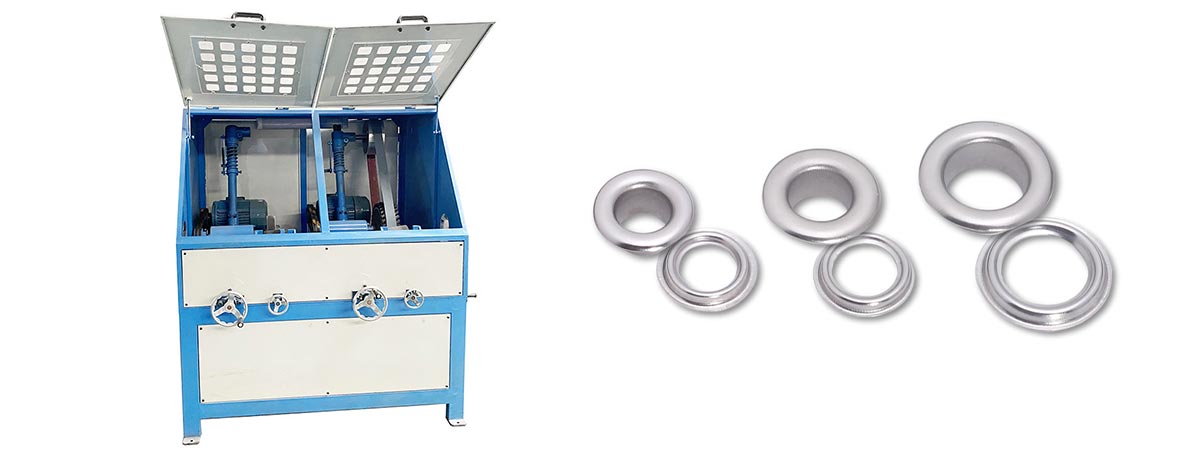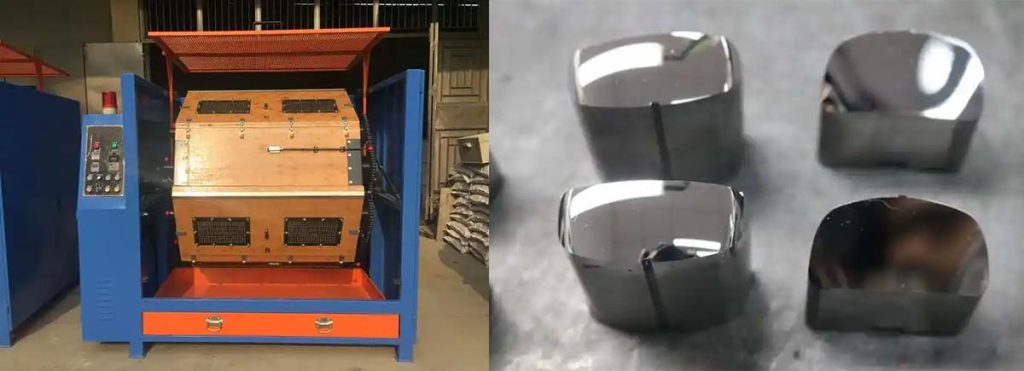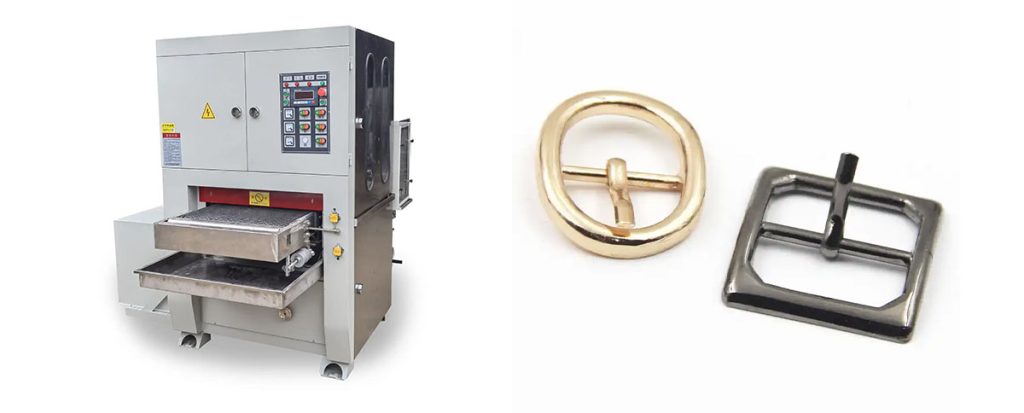

A steel polishing wheel is a specialized tool designed to smooth and refine metal surfaces. It removes imperfections, enhances shine, and prepares steel for further treatment. These wheels are essential in achieving a professional finish, whether for industrial applications or personal projects. Selecting the right wheel ensures compatibility with the material and delivers the desired results. Factors like wheel type, size, and speed play a crucial role in the polishing process. Using the wrong wheel can lead to uneven finishes or damage to the steel surface.
Key Takeaways
- Pick the right steel polishing wheel for the metal type. This helps polish better and avoids damage.
- Use the correct polishing compound for the wheel. This makes the finish look better and work faster.
- Change the wheel size and speed for best results. Good settings give even finishes and prevent mistakes.
- Clean the item and wheel after each use. Cleaning stops mixing materials and keeps the surface smooth.
- Buy strong wheels to save money later. Good wheels last longer and need fewer replacements.
Understanding Steel Polishing Wheel
What Is Steel Polishing Wheel?
A steel polishing wheel is a tool designed to refine and enhance the surface of metal objects. It is typically attached to the rotating head of a buffer or grinder. These wheels come in various shapes, sizes, and materials, such as cotton, aluminum oxide, and sisal strips. The abrasive material on the buffing wheel plays a crucial role in removing imperfections, smoothing rough edges, and achieving a polished finish. For instance, a cylindrical wheel with a diameter of 26 mm is commonly used for precision polishing tasks. The choice of wheel depends on the type of metal being polished, such as stainless steel, and the desired outcome.
Importance of Steel Polishing Wheel in Metal Polishing
Steel polishing wheel is essential for achieving professional results in metal polishing. The wheel helps remove scratches, rust, and other surface imperfections, leaving the metal smooth and shiny. The wheel also prepares the surface for additional treatments, such as coating or painting. Using the right wheel ensures efficiency and prevents damage to the material. For example, wheels made from steel wire or stainless steel are ideal for industrial applications like rust removal and grinding. The combination of the wheel and a suitable polishing compound enhances the effectiveness of the process, ensuring a consistent and high-quality finish.
Common Applications of Steel Polishing Wheel
Steel polishing wheel is versatile tools used in various industries and projects. Some common applications include:
- Metal Polishing: Refining surfaces of metals like stainless steel, aluminum, and brass.
- Rust Removal: Cleaning corroded surfaces to restore their original appearance.
- Industrial Use: Polishing and grinding in manufacturing and fabrication processes.
- Jewelry Making: Achieving a mirror-like finish on intricate metal pieces.
- Automotive Detailing: Restoring the shine of metal parts, such as rims and exhaust pipes.
These wheels, paired with the right polishing techniques and compounds, deliver exceptional results across different tasks.
Key Factors for Choosing a Steel Polishing Wheel
Material Compatibility with Steel
Choosing the right steel polishing wheel starts with understanding material compatibility. Different metals require specific abrasives to achieve optimal results. For instance, harder materials like stainless steel demand stiffer wheels, while softer metals benefit from gentler options. Using an incompatible wheel can lead to surface damage or inefficient polishing.
The table below highlights key factors to consider when selecting a wheel based on material type:
| Factor | Description |
|---|---|
| Material Type | Harder materials need stiffer wheels; softer metals require gentler abrasives. |
| Type of Buffing Compound | The polishing compound must match the material and wheel type for effective results. |
For stainless steel, pairing the wheel with a buffing compound stick designed for high-gloss finishes ensures a smooth and polished surface. This combination is particularly effective in achieving a mirrored finish or a brushed finish, depending on the desired outcome.
Desired Finish and Polishing Goals
The finish you aim to achieve plays a significant role in selecting the right buffing wheel. Whether you want a satin, brushed, or high-gloss finish, the coarseness of the buffing wheel and the polishing compound used will determine the result. For example, a coarse wheel paired with a cutting compound is ideal for removing deep scratches, while a finer wheel with a polishing compound creates a mirrored finish.
Statistical data shows that the quality of the finish correlates with the properties of the wheel and compound used. For instance, achieving a mean Ra (roughness average) of 0.13 µm requires precise polishing techniques and the right combination of tools. This level of smoothness is often necessary for applications like jewelry making or automotive detailing.
Wheel Size and Speed Compatibility

Wheel size and speed compatibility are critical for both safety and performance. Larger wheels cover more surface area, making them suitable for industrial buffing machines, while smaller wheels offer precision for intricate tasks. However, using a buffing wheel at an incorrect speed can lead to uneven results or even damage.
The table below outlines performance metrics for effective polishing outcomes:
| Metric | Value Range |
|---|---|
| Spindle Speed | 4000 r/min to 8000 r/min |
| Wheel Radius | 1 mm to 1.7 mm |
| Compression Depth | 0.8 mm to 1.6 mm |
| Feed Speed | 100 mm/min to 300 mm/min |
| Mesh Number | 240# to 600# |
Matching the wheel’s speed and size with the industrial polishing machine ensures consistent results. For example, a wheel with a radius of 1.7 mm operating at 6000 r/min is ideal for achieving a satin finish on stainless steel surfaces.
Polishing Compound Pairing
Pairing the right polishing compound with a steel polishing wheel is crucial for achieving optimal results in metal polishing. Polishing compounds come in various types, each designed for specific purposes, such as removing scratches, smoothing surfaces, or creating a high-gloss finish. Selecting the appropriate combination of wheel and compound ensures efficiency and enhances the quality of the finish.
Different buffing wheels, such as felt bobs and sisal wheels, work best with specific compounds. For instance, coarse compounds are ideal for initial polishing stages, while finer compounds are better suited for final touches. Proper application techniques also play a significant role in improving results. Using a polishing chart can help match compounds with metal types, ensuring compatibility and effectiveness.
To achieve a satin or brushed finish, a sisal wheel paired with a cutting compound is recommended. For a mirrored finish, a cotton wheel combined with a buffing compound stick designed for high-gloss finishes works best. These combinations not only enhance the surface appearance but also reduce processing time when applied correctly.
Tip: Always clean the wheel and workpiece between compound applications to avoid cross-contamination and ensure a consistent finish.
Durability and Cost Considerations
Durability and cost are critical factors when selecting a steel polishing wheel. While some wheels may have a higher upfront cost, their longevity and performance often justify the investment. For example, CBN wheels, known for their durability, offer significant long-term savings due to their extended lifespan and reduced need for replacements. In contrast, conventional wheels may seem cost-effective initially but can lead to higher operational costs over time due to frequent replacements.
Norton convolute wheels provide an excellent balance of durability and cost-efficiency. These wheels deliver consistent performance, reduce wear, and minimize maintenance needs. Their design also improves safety by reducing airborne dust, which enhances both the quality of the part finish and the working environment.
When evaluating cost-benefit, consider the wheel’s impact on labor efficiency. Durable wheels like CBN or Norton convolute not only save money but also improve productivity by reducing downtime. Investing in high-quality wheels ensures better results in metal polishing while minimizing long-term expenses.
Matching Polishing Wheel with Compound
Overview of Polishing Compound
Polishing compounds are essential in achieving a flawless finish on metal surfaces. These compounds, often made from fine abrasives, help remove imperfections, smooth surfaces, and enhance shine. Each compound is designed for specific purposes, such as cutting, buffing, or finishing. For instance, coarse compounds are ideal for removing deep scratches, while finer compounds create a high-gloss finish.
Common abrasive agents in polishing compounds include aluminum oxide, silicon carbide, and diamond. These abrasives vary in hardness and grit size, which influence their effectiveness. Smaller grit sizes produce finer scratches, resulting in shinier surfaces. Some compounds also contain additives like calcium phosphates or fluoride, which enhance their performance.
Tip: Always choose a polishing compound that matches the material and desired finish to avoid damaging the surface.
Pairing Compound with Wheel Types
Selecting the right combination of polishing compound and wheel type is crucial for optimal results. Different wheels, such as sisal, cotton, or felt, work best with specific compounds. For example, sisal wheels paired with cutting compounds are effective for initial polishing stages, while cotton wheels combined with buffing compounds excel in achieving a mirror-like finish.
The table below outlines criteria for matching compounds with wheel types:
| Criteria | Description |
|---|---|
| Surface Material | Different materials require specific types of polishing tools to avoid damage. |
| Size and Shape | Smaller tips are ideal for tight spaces, while larger wheels are suited for broad areas. |
| Type of Polishing Compound | Each compound has unique properties suitable for specific surfaces to ensure optimal results. |
| Adjustable Speed | Varying speeds are necessary for different surfaces and compounds to achieve a flawless finish. |
| Ergonomic Design | Tools should be designed for comfort to enhance usability during polishing tasks. |
Matching the right compound and wheel ensures efficiency and prevents surface damage.
Tips for Optimal Results in Metal Polishing
Achieving professional results in metal polishing requires attention to detail and proper techniques. Follow these tips for the best outcomes:
- Prepare the Surface: Clean the metal thoroughly to remove dirt and grease before polishing.
- Use the Right Speed: Adjust the polishing wheel’s speed based on the compound and material to avoid overheating or uneven results.
- Apply Compound Sparingly: Use a small amount of polishing compound to prevent buildup on the wheel.
- Work in Sections: Focus on small areas at a time to ensure consistent polishing.
- Clean Between Steps: Wipe the surface and wheel between compound applications to avoid cross-contamination.
Polishing techniques, such as two-body and three-body abrasive methods, also play a significant role in achieving the desired finish. These methods emphasize the importance of the abrasive agent’s characteristics and application method in minimizing substrate loss during polishing.
How to Use a Steel Polishing Wheel?
Preparing the Wheel and Workpiece
Proper preparation ensures effective polishing and prevents damage to the workpiece. Start by stripping any existing paint using mechanical or chemical methods. This step removes old coatings and exposes the bare metal. If the surface has defects, repair them to achieve a flawless finish. Sandblasting can then roughen the surface, improving the adhesion of polishing compounds. Degreasing is optional but recommended to eliminate grease or oil residues. Use professional degreasers for this step to ensure a clean surface.
For the polishing wheel, inspect it for wear or damage. Replace worn-out wheels to maintain consistent results. Attach the wheel securely to the polishing machine, ensuring it is compatible with the machine’s speed and size specifications. A clean and well-maintained wheel enhances the polishing process and reduces the risk of uneven finishes.
Step-by-Step Guide to Using a Polishing Wheel
- Begin with a clean wool compounding pad attached to a rotary buffer.
- Apply a small amount of polishing compound, such as NUSHINE® II, to the workpiece. Spread it evenly over a target area of 18–24 inches. Avoid letting the compound dry.
- Place the polishing wheel on the smeared area and spread the compound further before turning on the buffer.
- Run the buffer at approximately 2000 RPM. Tilt the pad 10–15 degrees so only one side touches the surface.
- Move the buffer over the surface at a steady pace of 1–2 seconds per foot. Apply light but firm pressure without pressing too hard.
- Continue polishing until the black residue disappears, revealing a clean and polished surface.
This method ensures efficient polishing and minimizes the risk of overheating or damaging the metal.
Achieving Consistent and Professional Results

Consistency in polishing requires attention to detail and adherence to quality assurance metrics. Polishing compounds vary in abrasiveness, so selecting the right one for the material is essential. For example, polishing stainless steel requires a compound designed for high-gloss finishes. The coarsest component of the compound determines its effectiveness, making tailored solutions critical for achieving the desired finish.
Target polishes designed for specific metals and environments enhance durability and quality. Regularly clean the wheel and workpiece to avoid cross-contamination. Adjust the polishing speed and pressure based on the material and compound used. These practices ensure a professional finish and extend the lifespan of the polishing tools.
Conclusion
Understanding steel polishing wheel is essential for achieving professional results in metal polishing. Each wheel serves a specific purpose, from creating a satin finish to achieving a high-gloss shine. Selecting the right wheel enhances not only the aesthetic appeal of the metal but also its durability and performance. For example, mechanical polishing works well for metals like stainless steel, while chemical methods suit harder materials.
Applying the tips shared in this guide ensures consistent results across various types of metal finishes. Readers can confidently refine their polishing techniques and achieve optimal outcomes by pairing the right tools and methods.
